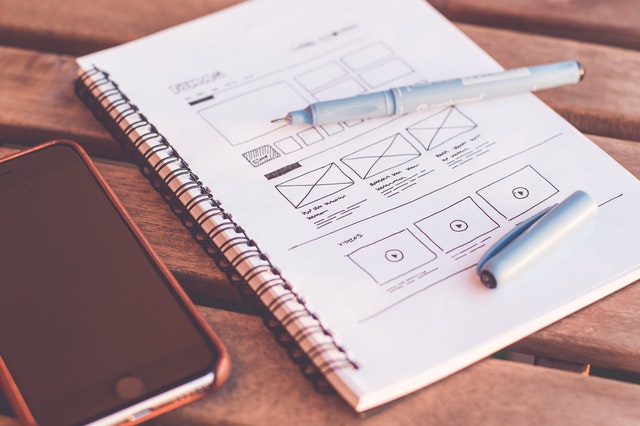Analyzing, designing and driving innovation - the profession of a user experience (UX) designer is characterized by its diversity. In my opinion, this makes it one of the most creative and exciting professions in the digital industry.
As a user experience designer, you have the chance to play a significant role in shaping digital innovations and developments. A UX designer decides what a technical system should be able to do and how it should be presented to the user. This can involve websites, apps, machines, cars or robots, for example - depending on the industry, company and product range.
The user is at the center of all decisions made by the UX designer. This is because the UX designer primarily ensures that the system is easy to use (usability) and that a positive user experience is created. Accordingly, a UX designer should always keep an eye on current trends and technical developments.
When asked about my job, I usually explain it in a nutshell as follows: Everything that the user interacts with is my construction site. This is called the user interface. I develop a concept for the user interface that allows users to achieve their goals in the best possible way. The designer then makes sure it looks nice. And the developer implements my concept from a technical point of view. Put simply.
In reality, it's a bit more complicated. The tasks of a user experience (UX) designer are diverse and vary depending on the position and company. The title "UX Designer" basically describes the eierlegende Wollmilchsau. It can mean that a UX designer simultaneously deals with the topics of user research, requirements analysis, conception and design or specializes in one or more areas. It is not uncommon to find job titles that emphasize the respective focus.
1. User Research
At the beginning of every project is the question of the wishes and needs of the users. Who is the system's target group? Which functions can make users happy or make their lives easier? To find answers to these questions, the UX designer conducts user research. To do this, he or she gets in touch with users, which means, for example, conducting interviews, organizing discussion groups with users, or setting up an online survey. Expert analyses or web analytics data on current user behavior can also be included.
In the course of a project, the UX designer tests the first prototypes of the system, e.g. for user acceptance or usability.
Numbers, data, facts - when it comes to user research, a UX designer should enjoy dealing with people and statistics and bring along a lot of openness and curiosity.
Job titles: UX Researcher, User Researcher, Usability Engineer.
2. Requirement Engineering
Based on the findings of the user research and the wishes of various stakeholders, the UX designer derives requirements for the system from the user's point of view. What functions should the system offer? How should the interaction with the system feel from the user's point of view? The requirements usually have to be coordinated with the user's own development team and the stakeholders so that everyone has the same expectations.
Requirements analysis is where the analytical skills of a UX designer are most required. One of the biggest challenges in this phase is to formulate the requirements in such an abstract way that no design decisions are anticipated yet, and at the same time so precisely that the fulfillment of the requirements can be measured afterwards.
Job titles: (User) Requirements Engineer
3. Concept
The conception is the most creative task of a UX designer. Taking into account the requirements of the system, the first step here is usually creative brainstorming - looking at similar systems and approaches, sketching initial ideas and discarding them again, and creating prototypes. Depending on the progress of a project, a prototype can be drawings or an already very mature, clickable prototype that hardly differs from the final system. The goal in this phase should always be to make it as easy as possible for the user.
A crucial role is to communicate the concept to others in an understandable way (e.g., to your own team) and to document it.
In addition to analytical, creative and communication skills, UX designers should also master the craft of prototyping. Here, there are various tools for implementation such as Axure, Sketch or InVision that support UX designers in the development of prototypes.
Job titles: Information Architect, Conceptual (UX) Designer
4. Design
There are UX designers who have a design background, and additionally take care of the design of the user interface. The design includes, for example, the colors, shapes and typography of the system. These design rules are usually recorded in a style guide or the UX designer follows an existing style guide.
A UX Designer with a focus on design should have a good sense of aesthetics and knowledge around the design craft (e.g. use of Adobe Creative Cloud or Sketch).
Job titles: UX/UI Designer, User Interface Designer
Where exactly the focus lies is often not clear from job descriptions with the title "UX Designer". While UX designers in smaller companies often deal with all four areas of responsibility at once, there is often more division of labor and specialization in larger companies.
No matter in which of the four areas of responsibility the focus of a UX designer lies, interdisciplinary teamwork with designers, developers and project managers plays an important role everywhere. But the UX designer not only takes on a mediator role in his own team, but also regularly presents his concepts to the stakeholders involved.
A very interesting report describing, among other things, the areas of responsibility of UX professionals is published every year by the professional association German UPA: https://www.germanupa.de/wissen/branchenreport
Ultimately, you have to live with one fact as a UX designer: For many, it remains a mystery what a UX designer actually does. Often friends and family understand that you do "something with IT" or are a web designer. In that case, feel free to forward this article 😉.



